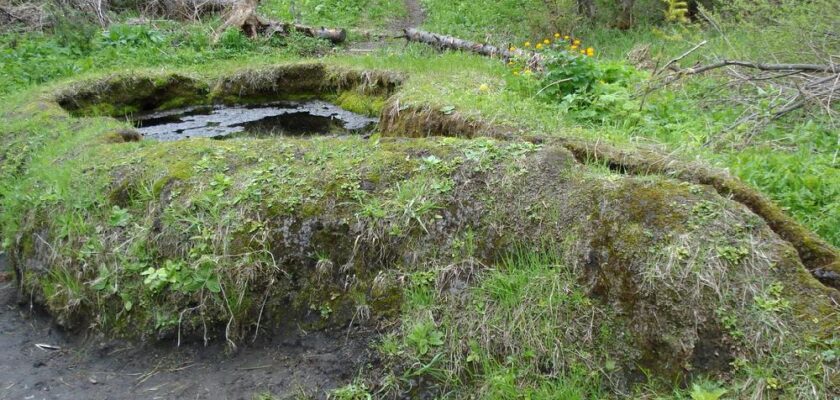Talovskie Chashy
Talovskie Chashy are rounded mineral springs formed more than 10 thousand years ago in the Tomsk region. Water in them is surrounded by travertine walls and is saturated with calcium, potassium, manganese, sodium salts, carbon dioxide and radon. The picturesque springs got their name from the small village of Talovka, which was once located near this place.







Highlights
Talovskie chalices have the status of a state natural monument. All construction, logging and campfires are forbidden around them.
Spring water from the bowls comes out under pressure, and there is a release of carbon dioxide. Regardless of the season, it has a constant temperature of +5…+6 ° C, so it does not freeze even in severe frosts. Since ancient times, this water is considered curative and used to treat skin diseases, eye diseases, stomach, intestines, liver and gallbladder.
.
All year round many Tomsk people and residents of the surrounding villages come to the Talovskiy bowls. The recreational load on the natural attraction is great, and the surrounding forest suffers from it. Recently, local authorities and nature conservationists have improved the approaches to the natural attraction. Now tourists can walk on boardwalks, relax in a gazebo and sit on benches. There are information stands around the natural monument, and foresters are removing brushwood and clearing the trails of accumulated debris.
.Similar to the Talovskie bowls travertine formations are found in two other places in the Tomsk region. These are the weakly mineral springs Sukhorechenskiye bowls and Berezovskiye bowls.
.
What the springs look like
The Talovskie chalices are located in an overgrown forest clearing of about 300 m². They once consisted of seven large springs, but today there are only four large springs and three small ones left.
The largest spring, often referred to as the “Big Talovskaya Bowl”, has dimensions of 3.5 by 2 meters and a depth of 1.5 meters. Its walls rise 1 m above the ground surface and are up to 0.5 m thick. Part of the water overflows over the calcareous formations and the rest flows into the stream through a 2.1 m long travertine chute. It is estimated that 1 liter of mineral water comes out of this spring every second.
.
The second bowl is located on the slope of the ravine. It is smaller in size than the first and does not have such pronounced walls. The water flows from it into the creek through a mossy travertine trough about 10 meters long. Two other rounded bowls, up to 1 m in diameter, with no bulging walls, can be seen nearby.
.How the process of bowl growth occurs
According to scientists, the water in the springs does not come from groundwater, but from much deeper fault zones of Paleozoic sediments. This is how the rich content of calcium salts in it can be explained.
.
Due to the deposition of mineral salts, bowl-like formations have appeared around the springs. Their walls are made of calcareous tuff or travertine. Interestingly, travertine includes the mineral bernessite, which is very rare in Russia. It gives lime formations a characteristic earthy color.
.Due to the fact that the water is constantly overflowing over the edges of the Talov Bowls, travertine walls year after year grow and thicken. Calcium carbonate is very well assimilated by plants, so the springs have an emerald border of sphagnum mosses. At the same time, calcium carbonate is deposited in these plants, replacing cellulose and creating calcite pseudomorphoses throughout the plant tissue.
.
It is known that during the years of Soviet rule, the travertine bowls around the springs were cut down to the ground to facilitate watering of cattle. However, time has passed and the natural springs have regrown their lime walls.
.
How to get there
Talovskie bowls are located 40 kilometers southeast of Tomsk. They are located on the right bank of the stream that flows into the Basandayka River near the village of the same name. Those travelers who get here by car, go through Stepanovka, Mirny, Bolshoye Protopopovo and Mezhieninovka. Tourists, who get here on their own, take an electric train on the Tomsk branch of the Trans-Siberian Railway to the stopping point “41 km” and walk to Talovskie chashas on a country road. The distance of 3.8 km is usually covered in 1-1.2 hours.
.